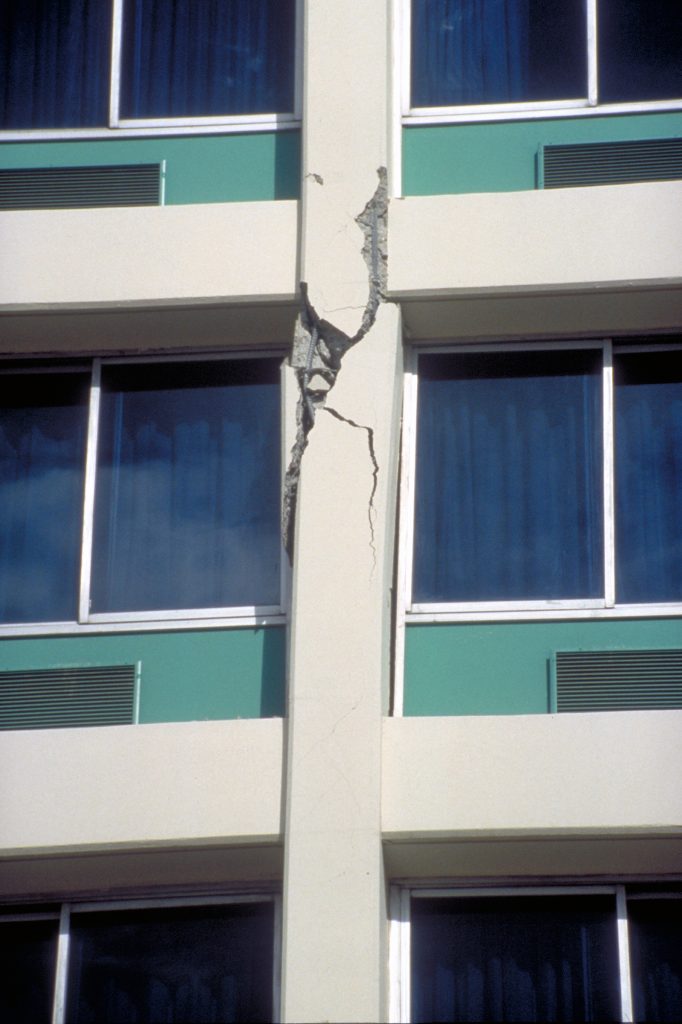San Francisco Concrete Ordinance Requirements

The San Francisco Department of Building Inspection is keenly aware of the vulnerability of existing non-ductile concrete (NDC) and rigid wall flexible diaphragm (RWFD) buildings and has performed several screening and risk assessment studies, including its Community Action Plan for Seismic Safety (CAPPS). San Francisco recently adopted an ordinance to assess the city’s inventory of these buildings, notify owners, and adopt voluntary seismic retrofit standards for such buildings.
Why Is the Ordinance Necessary?
- San Francisco is in an area of high-seismic activity. According to the United States Geological Survey (USGS), a damaging earthquake of magnitude 6.7 or greater has a 72% chance of occurring in the Bay Area before 2043.
- San Francisco faces elevated seismic risk due to a combination of geologic conditions (landslide and liquefaction) and social factors, including high density.
- Older concrete buildings, particularly those constructed before 1980 for NDC and 1999 for RWFD, are vulnerable to significant damage or collapse during an earthquake.
- San Francisco’s CAPSS estimated that 50% of all structural casualties in a magnitude 7.2 earthquake on the San Andreas Fault would occur in older concrete buildings.
Which Buildings Are Subject to the Ordinance?
All concrete buildings built or retrofitted before 1 July 1999 are subject to the current ordinance and must be evaluated by a structural engineer to determine if they are exempt from the future ordinance. (The inventory form is not available yet. It may allow a building owner to complete the form for non-engineering exemptions, such as concrete buildings that are one- and two-family dwellings). This includes:
- Reinforced concrete buildings or portions of buildings with shear walls or
moment-resisting frames.- Exemptions include one- and two-unit dwellings, single-story buildings, and
two-story buildings with no concrete columns or wall piers and a concrete floor or roof, or both. Buildings including complete steel frames, and wood- or metal-stud-framed construction over a single-story reinforced concrete podium are also exempt.
- Exemptions include one- and two-unit dwellings, single-story buildings, and
- Single-story RFWD buildings (i.e., tilt-up), including buildings containing RWFD portions
- Exemptions include buildings with a footprint of 3,000 square feet or less.
How Do I Comply with the Ordinance?
The city will issue a letter notifying owners that their building may potentially be at risk during an earthquake. Owners of older concrete buildings that should have received a letter are expected to proceed as if they received one.
Following the notification, the building owner must engage a structural engineer to complete a screening form to determine if their building is considered a potentially hazardous building (NDC or RWFD) or meets any exemptions. This will usually require a site visit, a review of available drawings, and possibly a brief study. At the time of this posting, the form used for screening was not available, so the information required on the form is unknown (but it should be available by early December 2025). It is possible that some exemptions can be claimed without the need to hire a structural engineer (e.g., for a one- or two-unit dwelling or one-story concrete building). We will update this page when the form becomes available. The screening form must be completed within an eighteen-month period after receiving notification.
Voluntary Seismic Retrofit Program Details
Owners of a building determined to be an NDC building who wish to participate in the voluntary retrofit program (that will result in an exemption for at least twenty years from any future mandatory retrofit ordinance) must demonstrate that the building meets one of the two following criteria (as is or as retrofitted):
Criteria 1
- The building has no seismic deficiency following the national standard ASCE 41 – Seismic Evaluation and Retrofit of Existing Buildings for BSE-1E earthquake hazard level (moderate earthquake shaking) with an S-5 performance goal (collapse prevention).
- The building has none of the following characteristics:
- Weak story.
- One or more walls or frames do not continue to the foundation.
- NDC moment frames as the primary lateral system.
- Punching shear deficiency in the concrete slab.
- Weak connection of concrete walls to a flexible diaphragm.
- Inadequate length of bearing connection (precast buildings).
Criteria 2
- Has no seismic deficiency following ASCE 41, BSE-2E earthquake hazard level (severe earthquake shaking) with an S-5 performance goal (collapse prevention).
For both Criteria 1 and Criteria 2, any unreinforced masonry must be removed or included in the evaluation. If appropriate, the unreinforced masonry must be retrofitted.
These two criteria options offer building owners defined pathways for voluntary retrofit, either through a targeted, deficiency-based approach under Criteria 1 or by meeting a higher threshold of seismic force resistance under Criteria 2. Neither option is intended to provide a building that performs as well as a building meeting the current building code requirements.
Owners of an RWFD building who wish to participate in the voluntary retrofit program must demonstrate that the building meets the requirements of Chapter A2 of the San Francisco Existing Building Code (SFEBC). This appendix chapter uses reduced forces (75% of those required for the design of a new building) and has a limited scope. It is assumed that any deficiencies in the roof diaphragm or the wall panels are of secondary importance, and they are not addressed in the chapter.